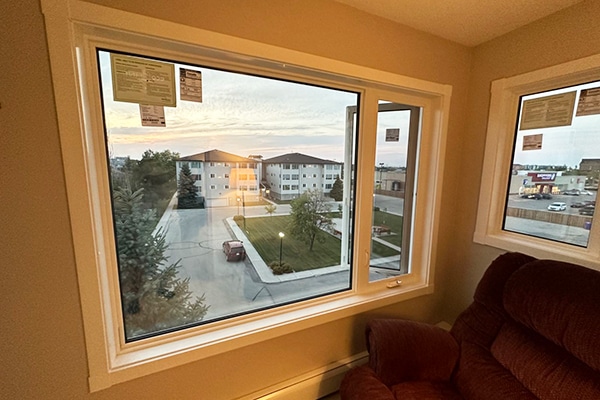
Moving into a new home is an exciting journey but requires careful preparation and attention to detail. Whether you’re a first-time homeowner or a seasoned mover, thoroughly inspecting your new residence is vital for ensuring safety, comfort, and peace of mind.
Today, we’ll guide you through 5 essential checks to perform before you settle into your new home. From the structural integrity of the building to the efficiency of egress windows in the basement, these home inspection tips will help you avoid future headaches and enjoy your new home to the fullest.
1. Inspecting the Structural Integrity of Your New Home
Before you start unpacking, it’s vital to ensure the bones of your new home are strong and secure. Structural integrity is the cornerstone of a safe and lasting residence. Here’s what to look for:
- Foundation and Walls: Check for cracks or shifts in the foundation. Look out for uneven floors, which can indicate settling or foundational issues. Walls should be free from significant cracks or bulges.
- Roof Condition: A sturdy roof is essential for protecting against the elements. Look for missing or damaged shingles and signs of water damage, and ensure the gutters and downspouts are intact and clear.
- Signs of Water Damage: Look for stains on ceilings or walls, which might indicate past or ongoing leaks.
- Pest Infestations: Check for signs of pests like termites, which can compromise the structural integrity.
Remember, while some minor issues can be fixed easily, major structural problems can be a deal-breaker. It’s always wise to consult a professional inspector for an expert opinion.
2. Ensuring Efficient and Safe Egress Windows in the Basement
Egress windows in the basement are more than just an exit route in emergencies; they are crucial to your home’s safety and legal compliance. Here’s what to focus on when inspecting the basement area and especially the windows there:
- Size and Accessibility: Casement egress window must meet specific size requirements to be considered safe for exit. Ensure they are large enough for an adult to pass through easily and are accessible without obstacles.
- Quality of Installation: Check for proper sealing and insulation to prevent water leakage and drafts. A well-installed window also contributes to energy efficiency.
- Operation and Maintenance: Windows should open smoothly and stay open without assistance. Look for signs of rust or wear in the mechanism, which could hinder operation.
- Natural Light and Ventilation: Egress windows can significantly improve the basement’s ambiance by providing natural light and ventilation, making the space more livable and pleasant.
- Compliance with Local Codes: Each region in North America has specific requirements for egress windows. Ensure the windows in your new home comply with these local building codes for safety and legal purposes.
3. Evaluating Electrical and Plumbing Systems
A thorough inspection of your new home’s electrical and plumbing systems is essential for ensuring safety and functionality. Here’s what to keep an eye on:
- Electrical Wiring and Outlets. Check for outdated wiring, especially in older homes. Look for signs of wear or damage. Test all outlets to ensure they are functioning and properly grounded, and examine the fuse box or circuit breakers for any signs of disrepair or overload.
- Plumbing System. Test all taps for water pressure and hot water functionality. Inspect under sinks for leaks or signs of water damage.
- Safety Measures. Ensure Ground Fault Circuit Interrupters (GFCIs) are in bathrooms and kitchens to prevent electrical shocks. Check for a sump pump in the basement, especially in areas prone to flooding.
Electrical and plumbing issues can be costly to repair and pose significant safety risks. Hiring a professional inspector for a comprehensive evaluation is advisable, especially if you have concerns or notice any red flags during your initial checks.
Read also: What to do after moving into a new house
4. Checking Heating, Ventilation, and Air Conditioning (HVAC) Systems
A well-functioning HVAC system is key to ensuring your new home is comfortable, energy-efficient, and healthy. Here’s what to focus on during your inspection:
- Age and Condition of the System. Determine the age of the HVAC system. Most systems have a lifespan of 15-20 years. Look for signs of regular maintenance, such as clean filters and dust-free vents.
- Heating and Cooling Efficiency. Test the system to ensure it heats and cools effectively. Listen for unusual noises or vibrations, which could indicate problems.
- Air Quality and Ventilation. Check for adequate ventilation, especially in areas like the kitchen and bathrooms. Inspect any mould or mildew around vents that might affect air quality.
- Thermostat Functionality. Ensure the thermostat is working correctly and responds to changes in settings. Consider upgrading to a programmable thermostat for better energy efficiency.
- Energy Efficiency Considerations. Look for ENERGY STAR ratings on the HVAC equipment. Consider the insulation in your home, as it directly impacts the HVAC system’s efficiency.
An inefficient HVAC system can lead to high energy bills and uncomfortable living conditions. If you’re unsure about the system’s condition, consulting with an HVAC professional can provide peace of mind and save you from future expenses.
5. Ensuring a Smooth Transition to Your New Home
Moving into a new house is a significant milestone, and ensuring your new home is safe, comfortable, and well-suited to your needs is crucial for a smooth transition. By conducting thorough checks on the structural integrity, egress windows in the basement, electrical and plumbing systems, and HVAC systems, and understanding the neighbourhood dynamics, you’re setting the stage for a happy, healthy living environment.
While some issues can be easily fixed, others might require professional advice or even reconsidering your purchase. Taking the time to inspect these key areas not only provides peace of mind but also helps in making an informed decision about your new home.
